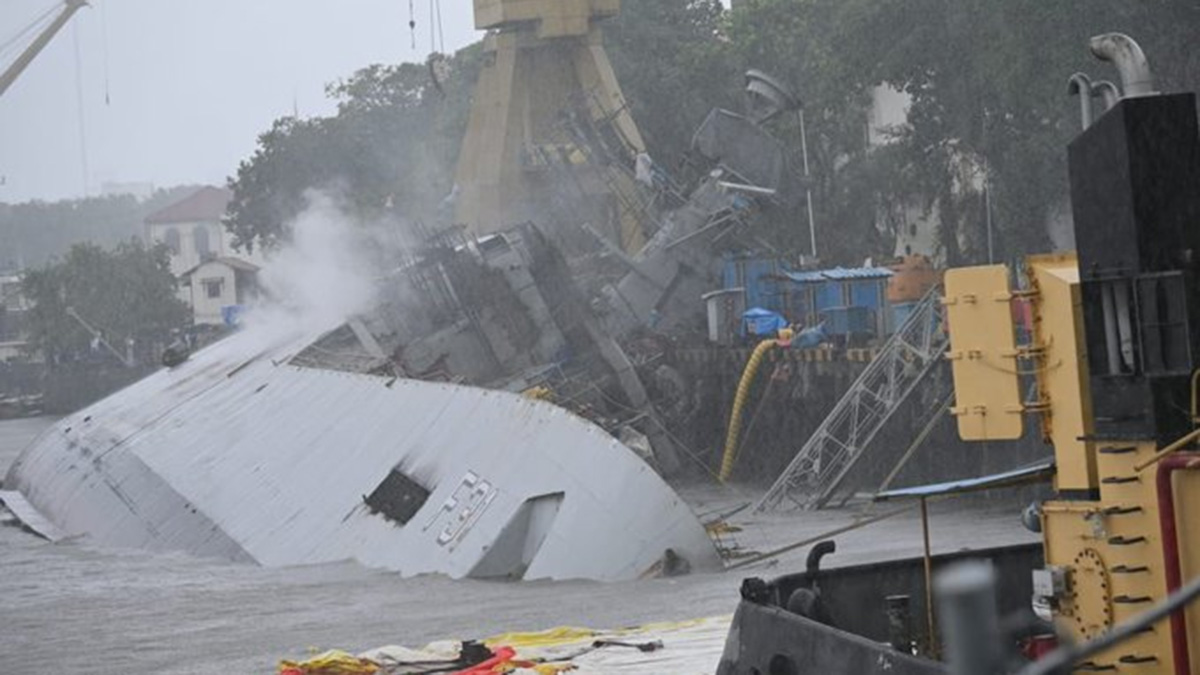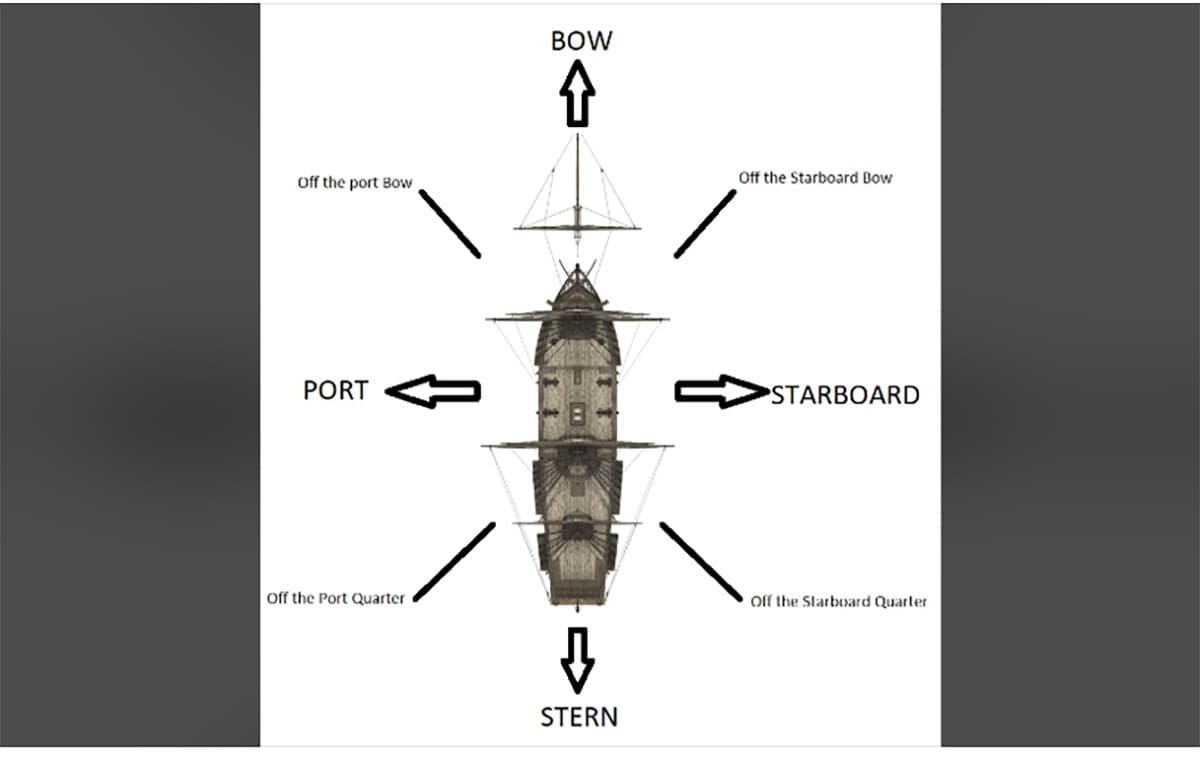LIVE: Iran Planning to Kill Trump, US Intel Warned Before Assassination Attempt



Oman Mosque Shooting: 6 Dead, Islamic State Claims Responsibility
23 hours ago

Hamas Leader Under Pressure From Own Commanders to Accept Gaza Ceasefire
23 hours ago

US Intel Warned of Iranian Threat to Donald Trump Ahead of Assassination Attempt
23 hours ago

Meta's Generative AI Dreams Derailed by Brazil's Privacy Clampdown |
1 day ago

Houthis Claim Responsibility for Deadly Attack on Tel Aviv Near US Embassy |
1 day ago

Zelensky Faces Challenges with Trump’s Return, Vows to Work Hard |
1 day ago

Barack Obama Reportedly Wants Joe Biden to Drop Out of 2024 Presidential Race |
1 day ago

Donald Trump Recounts Assassination Attempt in Emotional RNC Speech |
1 day ago

Bangladesh: Violent Clashes at Dhaka University Over Job Quotas Leave 400 Injured
3 days ago
Following the INS Brahmaputra fire, which left the warship heavily damaged and a sailor missing, the Indian Navy faces renewed scrutiny over its safety protocols and operational readiness
)
The heavily tilted INS Brahmaputra at the naval dockyard in Mumbai
While India prays for the safety of the junior sailor who went missing after the fire on the Indian Navy’s frontline guided missile frigate INS Brahmaputra on Sunday evening, the severely damaged warship is now resting on her left or the port side. The vessel tilted heavily following the fire while undergoing a refit at the naval dockyard in Mumbai.

The nearly 3,600-tonne INS Brahmaputra is equipped with a sophisticated arsenal including surface-to-surface and surface-to-air missiles, medium-range guns, anti-submarine rockets, radars, sonars and advanced electronic warfare systems. The frigate measures 125 meters in length and has a beam of 14.4 meters, enabling it to sail at speeds of up to 30 knots. Typically, the ship is crewed by 40 officers and 360 sailors. If it is even possible, salvaging the INS Brahmaputra will be an extremely challenging task.
Over the years, the Indian Navy has faced several fire incidents on its ships and submarines, raising serious concerns about safety protocols, maintenance and operational procedures. These incidents have significantly impacted the navy’s operational readiness, prompting investigations and leading to policy changes aimed at improving safety measures.
INS Sindhurakshak (2013)
One of the most notable incidents occurred on August 14, 2013, when the Kilo-class submarine INS Sindhurakshak experienced a series of explosions followed by a massive fire while docked in Mumbai. The submarine, fully armed at the time, sank, resulting in the tragic loss of 18 naval personnel. This incident was primarily attributed to human error leading to an internal explosion in the torpedo section. The disaster significantly affected the navy’s submarine strength and raised critical questions about the safety protocols for handling munitions on submarines.
INS Konkan (2013)
On December 4, 2013, the minesweeper INS Konkan experienced a fire while docked in Visakhapatnam. The fire was contained, but the vessel sustained considerable damage. Investigations pointed to a short-circuit and inadequate fire suppression systems as the cause. This incident prompted a review of fire-fighting capabilities and equipment on similar vessels within the fleet.
INS Sindhuratna (2014)
Another serious incident took place on February 26, 2014, involving INS Sindhuratna, a Kilo-class submarine conducting a routine training exercise off the Mumbai coast. An electrical fire broke out in the cables, leading to smoke engulfing the submarine. Unfortunately, two officers lost their lives and several crew members suffered from smoke inhalation. This incident led to the resignation of then Admiral DK Joshi, who took moral responsibility for the mishap.
INS Viraat (2016)
In September 2016, a minor fire broke out on the decommissioned aircraft carrier INS Viraat during welding operations at the Mumbai Dockyard. Although the fire was quickly brought under control, it underscored the importance of maintaining stringent safety measures even on decommissioned vessels.
INS Betwa (2016)
On December 5, 2016, the guided missile frigate INS Betwa experienced a significant accident while undocking in Mumbai. The frigate toppled over due to a failure in dock-blocks resulting in two deaths and 14 injuries. This incident raised concerns about the navy’s ship-handling procedures and dock safety practices.
INS Shivalik (2018)
Another fire incident occurred on January 10, 2018, involving the stealth frigate INS Shivalik at the Karwar Naval Base. A fire in the engine room was caused by an oil leak, which caught fire upon contact with hot surfaces. Although the fire was controlled without major damage, it highlighted the vulnerability of advanced vessels to such risks.
INS Ranvir (2022)
In more recent times, on January 18, 2022, an explosion led to a fire on the destroyer INS Ranvir at the naval dockyard in Mumbai. Three naval personnel lost their lives and 11 were injured in the incident. The explosion, possibly related to a malfunction in the air-conditioning system, emphasised the need for better upkeep of older ships.
INS Sahyadri (2023)
Another incident in March 2023 involved the INS Sahyadri, where a fire broke out in the engine room during a routine patrol mission in the Indian Ocean. The fire was attributed to a technical fault in the fuel lines.
Causes of fires in the Indian Navy
Recurring fire incidents in the Indian Navy are attributed to several factors.
First, the ageing fleet is a significant concern, as many vessels, like submarines INS Sindhurakshak and INS Sindhuratna, are over two decades old and prone to mechanical failures. Second, maintenance lapses often arise from budget constraints and resource allocation issues, resulting in delays that impact operational safety and readiness. Third, human error, particuarly procedural lapses have been a recurrent issue sometimes leading to severe consequences as seen in the Sindhurakshak and Sindhuratna incidents. Fourth, technical failures, such as malfunctions in electrical systems and engines have been identified as causes of fires with battery failures and short circuits being recurrent issues. Lastly, safety protocols and fire suppression systems both need a serious relook to address onboard risks.
The impact of these fires on the Indian Navy’s operational readiness is significant. The loss of assets, such as INS Sindhurakshak, depletes the navy’s capabilities and creates strategic gaps. Financial costs of repairing and replacing damaged vessels strain the navy’s budget diverting resources from modernisation and acquisitions. The psychological impact on personnel can undermine confidence in safety measures affecting morale and operational effectiveness. Operational delays also occur during repairs leading to gaps in maritime security coverage and impacting readiness.
The series of fire incidents within the Indian Navy highlights the critical need for comprehensive strategies encompassing maintenance, training and modernisation. While efforts are being made to address these challenges, continuous vigilance and proactive measures are essential to safeguard naval assets and ensure operational readiness.

Continuing their stellar rally, shares of Suzlon Energy have attained another significant milestone in today's session by hitting a 14-year peak as investors reacted positively to the company's June quarter numbers, which were released on Monday, post market hours.
In the June quarter, Suzlon Energy achieved its highest wind turbine deliveries in seven years, reaching 274 MW, marking a 103% increase year-over-year. Revenue from operations surged to ₹2,016 crore, a 50% improvement from the previous year, while quarterly EBITDA (Earnings Before Interest, Taxes, Depreciation, and Amortization) hit ₹370 crore, the highest in seven years.
The company's profit after tax saw a remarkable 200% increase, reaching ₹302 crore. Its net cash position stood at ₹1,197 crore as of June 30, 2024.
Suzlon’s order book at the end of the June quarter reached a record 3.8 GW, the highest in its history. Gross debt was significantly reduced to ₹101 crore in Q1 FY25, down from ₹6,391 crore in FY22, as noted in the company’s earnings presentation.
Amidst this stellar performance, Suzlon Energy's stock hit the 5% upper circuit limit in today’s trading session, hitting a 14-year high of ₹58 per share.
Following a lengthy period of decline from 2008 to 2019, the company's shares experienced a remarkable resurgence in 2020, achieving a 246% increase. This positive trend continued with gains of 60% in CY21, 13% in CY22, and a substantial 260% in the previous calendar year. The shares have further climbed by 51% so far this year.
This significant rise in share value is largely due to the company's consistent order wins, strategic focus on reducing debt, and efficient management of working capital.
In June, several domestic and international brokerage firms affirmed their optimistic outlook on the company's growth prospects, with ICICI Securities setting a target price of ₹60 per share and maintaining a 'buy' rating.
India's power demand is projected to rise substantially, with renewable energy sources expected to meet a significant portion of this growing demand. The Indian government has set an ambitious electricity generation target of 1,900 billion units (BU) for the fiscal year 2024–25, marking a notable increase of approximately 9.3% from the 1,738.828 BU generated in the previous fiscal year (2023–24).
As the world's third-largest energy consumer and fourth-largest producer of renewable power capacity additions, India has made considerable strides in the energy sector. The country ranks fourth in wind power and fifth in solar power, with a total installed power generation capacity of 442 gigawatts (GW) as of March 31, 2024.
Of this, 199 GW is derived from non-fossil fuel sources, accounting for 45% of the total capacity. In fiscal year 2023–24, renewable energy contributed approximately 71% to the nation's power capacity additions.
India's peak power demand has grown at an annual rate of over 5% over the past decade and is expected to continue rising, driven by efforts to electrify even the most remote villages. The country is anticipated to experience the highest increase in global energy demand growth until 2030, fueled by expanding economic activity and increased digitalisation across industrial, commercial, and residential sectors.
The goal of achieving 500 GW of non-fossil fuel capacity by 2030 has gained urgency due to recent developments emphasising energy security and the need for affordable, clean energy. To meet this target, the government plans to tender 50 GW of renewable energy projects annually through FY 2027–28.
This growth trajectory will predominantly be steered by the wind and solar energy sectors. Wind energy currently contributes 10% (43 GW) of the total installed capacity of 442 GW, and projections indicate that it will ascend to 13% (100 GW) by 2030.
Similarly, solar energy, which presently constitutes 19% (82 GW) of the total capacity, is forecast to burgeon to 38% (293 GW) by 2030, showcasing a substantial increase in its share of the overall power capacity.
Disclaimer: The views and recommendations given in this article are those of individual analysts. These do not represent the views of Mint. We advise investors to check with certified experts before taking any investment decisions.
Catch all the Budget News , Business News , Market News , Breaking News Events and Latest News Updates on Live Mint. Download The Mint News App to get Daily Market Updates.